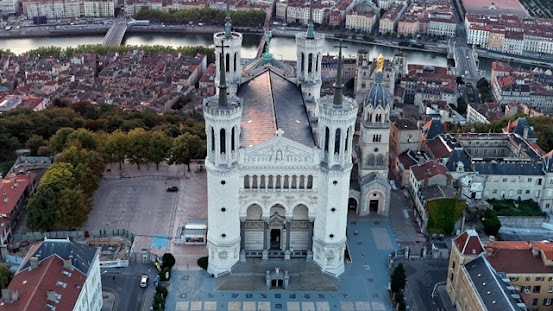What Else to Do When Visiting Le Lyon Vert Casino in France
Located at 200 Avenue du Casino in La Tour-de-Salvagny, the Casino slot Le Lyon Vert is considered one of the most beautiful gambling houses in all of France. Although modest in size compared to mega-casinos, the Le Lyon Vert offers 12 table games and over 100 electronic games.
Guests may dine at two restaurants or stay at the Pavilion hotel and spa. The Brasserie Le Caz offers casual dining next to the game floor. The Restaurant La Rotunde features cuisine by Michelin star chef Jean-François Mallet. Guests sit beside large windows, looking out over a large natural park.
When you’re not gambling for real money at Le Lyon Vert and want to see more of the historic city, there are more places to visit than you can fit into a weekend. Here are a few great recommendations.
Basilica of Notre-Dame de Fourvière
The ancient Romans built a basilica in their colonies to serve as a public building. They held trials and public assemblies in their basilcae, which served as town halls. The church gradually adopted the use of basilicae for worship.
The Basilica of Notre-Dame de Fourvière rose beside the ancient shrine of Fourvière. Pilgrims have visited the shrine, dedicated to Our Lady of Fourvière, since 1170. Residents decided to construct the basilica after the city survived the 1870 Franco-Prussian war unscathed.
Built in the late 1800s, the Basilica Fourvière contains two churches, four main towers, and a belltower. The architecture is a blend of Romanesque and Byzantine designs. According to tradition, Architect Pierre Bossan began designing the basilica in the 1840s, but a choice of location and start of construction waited until the 1880s.
Bossan’s design called for ornate decoration in the upper church, but the lower sanctuary utilizes a much more plain design. The city’s residents gave the nickname of “the upside-down elephant” to the basilica because of its stunning and unusual architecture.
Parc de la Tête d’Or
Legend says a treasure lay buried somewhere in the grounds of what became Parc de la Tête d’Or. The land was initially owned by a wealthy local family centuries ago, and it was a marshy backwater for the nearby Rhône river.
Some of the property passed to the Hospices Civils de Lyon (a teaching hospital), which the city established in 1802.
After the city decided to create an urban park there in the mid-1800s, the land was purchased from the hospital and then drained; the city subsequently planted a forest designed by architect Christophe Bonnet on the grounds.
Lyon’s government combined a nearby botanical garden with the new park in 1957, transferring about 4,000 plants to Tête d’Or. The botanical grounds now cover seven hectares and comprise one of France’s most extensive botanical gardens.
The park also includes a zoo, which added an African plain exhibit in the early 2000s.
Lyon Cathedral
The Lyon cathedral’s history extends back to the 2nd Century CE and is one of Christianity’s oldest centers in Europe. Saint Pothinius, martyred in 177, founded the original cathedral.
His successor, Saint Irenaeus, continued the work of expanding the Christian community and the cathedral. Lyon’s bishops played essential roles in the Roman Catholic Church’s growth, including putting down heresies and in Lyon’s history.
The Lyonnais church built several cathedrals and chapels on the same spot, and construction on the current building began in the year 1180. Construction lasted until 1476.
The cathedral houses two crosses beside the altar dating to the Second Council of Lyon in 1274 and a magnificent Lyon Astronomical Clock built in the 1300s. The organ dates from 1841 but was rebuilt and enlarged in 1875.
Presqu’île
The Presqu’île (“almost island”) is a point of land starting at the base of the Croix Rousse hill, projecting toward the Rhône and the Saône rivers’ confluence. The district houses many business and government buildings and is quite popular with tourists.
Some of the streets and buildings in Prsesqu’ile are several hundred years old, but new streets and buildings date from every century. Some historical buildings like the Celestins Theatre have been renovated.
Famous landmarks still popular with tourists include Basilica of Saint-Martin d’Ainay, the stock exchange, the Museum of Fine Arts in the Saint Pierre Palace, and the Hôtel de Ville (city hall).
When you’re not busy with the casino games at Le Lyon Vert, Presqu’île is a great place to explore for some historic sights.




ความคิดเห็น
แสดงความคิดเห็น